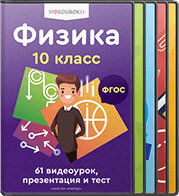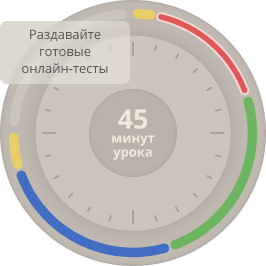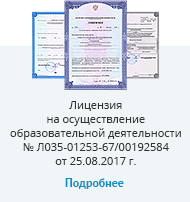

СДЕЛАЙТЕ СВОИ УРОКИ ЕЩЁ ЭФФЕКТИВНЕЕ, А ЖИЗНЬ СВОБОДНЕЕ
Благодаря готовым учебным материалам для работы в классе и дистанционно
Скидки до 50 % на комплекты
только до
Готовые ключевые этапы урока всегда будут у вас под рукой
Организационный момент
Проверка знаний
Объяснение материала
Закрепление изученного
Итоги урока

The Ultimate Guide to Oxygen Cylinders: Uses, Types, and Safety Tips
Oxygen Cylinder
Oxygen cylinders have become an essential part of modern medical care and emergency preparedness. Whether for hospitals, home healthcare, industrial use, or travel, understanding the functions, types, and safe handling of oxygen cylinders is crucial. This guide covers everything you need to know about from their uses and benefits to safety tips and purchasing advice.
What is an Oxygen Cylinder?
An oxygen cylinder is a storage vessel used to contain oxygen gas under high pressure. Made from aluminum or steel, these cylinders provide supplemental oxygen to individuals who typically have difficulty breathing or require oxygen therapy due to medical conditions. In industrial settings, oxygen cylinders are also used in welding, cutting, and other chemical processes.
Why is Oxygen Therapy Important?
Oxygen therapy is a medical treatment that delivers oxygen gas to help patients maintain adequate oxygen levels in their blood. It's vital for individuals suffering from:
-
Chronic Obstructive Pulmonary Disease (COPD)
-
Pneumonia
-
Asthma
-
COVID-19 and other respiratory infections
-
Congestive heart failure
Oxygen cylinders are often prescribed for use at home when continuous oxygen supply is needed but an oxygen concentrator isn't available or suitable.
Types of Oxygen Cylinders
1. Medical Oxygen Cylinders
These are the most commonly used cylinders in hospitals, ambulances, and homes. They contain high-purity oxygen and are essential for patients requiring respiratory assistance.
2. Industrial Oxygen Cylinders
Used in factories and workshops, these oxygen cylinders support processes such as welding, flame cutting, and chemical manufacturing. They are not suitable for medical use due to lower purity levels.
3. Portable Oxygen Cylinders
Lightweight and easy to carry, portable oxygen cylinders are ideal for home use, travel, or emergencies. Many patients rely on them for mobility while undergoing oxygen therapy.
Sizes and Capacities of Oxygen Cylinders
Oxygen cylinders come in a variety of sizes, typically labeled as B, D, E, M6, and H depending on the volume they hold:
-
B-Type Cylinder: Common for short-term use.
-
D-Type Cylinder: Often used in home care and ambulances.
-
E-Type Cylinder: Medium-sized, used in transport and emergency cases.
-
M6/M9 Cylinders: Portable options for travel.
-
H-Type Cylinder: Large capacity, ideal for hospital environments.
The capacity directly affects how long the oxygen supply lasts, which is a vital consideration for both home users and healthcare professionals.
How to Use an Oxygen Cylinder Safely
Step-by-Step Guide for Safe Usage
-
Check the pressure gauge to ensure the cylinder is full.
-
Attach the regulator and flow meter correctly.
-
Adjust the flow rate as prescribed by a medical professional.
-
Use a nasal cannula or oxygen mask for oxygen delivery.
-
Turn off the cylinder when not in use to conserve gas.
Important Safety Tips
-
Store the cylinder upright in a secure location.
-
Keep away from heat sources, flames, or electrical equipment.
-
Do not smoke near an oxygen cylinder.
-
Ensure regular maintenance and pressure checks.
-
Always have a backup cylinder in case of emergencies.
Where to Buy Oxygen Cylinders
If you're looking to purchase an oxygen cylinder, it’s important to choose a reliable and certified supplier. In most cities, especially after the COVID-19 pandemic, demand has surged, and suppliers are more readily available.
Tips for Buying an Oxygen Cylinder
-
Check if the supplier provides medical-grade oxygen.
-
Ensure the cylinder includes a regulator and mask/cannula.
-
Ask about refilling services and whether they offer portable options.
-
Verify certification and safety testing.
Many medical equipment providers also offer rentals, which is a cost-effective option for short-term use.
Oxygen Cylinder vs. Oxygen Concentrator: What’s the Difference?
| Feature | Oxygen Cylinder | Oxygen Concentrator |
|---|---|---|
| Oxygen Source | Stored gas | Extracts oxygen from air |
| Portability | Portable (limited) | More portable options available |
| Oxygen Supply | Limited (based on size) | Continuous |
| Maintenance | Low | Moderate |
| Cost | Lower initial cost | Higher upfront cost |
While oxygen concentrators are convenient for long-term use, oxygen cylinders are preferred in emergencies, during power outages, or when high-flow oxygen is required.
Legal & Medical Considerations
-
Always consult a licensed medical practitioner before starting oxygen therapy.
-
Ensure the oxygen cylinder meets ISO and local regulatory standards.
-
For industrial use, proper training in handling and operation is essential.
Disposal and Refilling
Empty oxygen cylinders must be refilled by authorized services to avoid the risk of contamination. Many vendors offer exchange programs, where empty cylinders are swapped for full ones. Never attempt to refill an oxygen cylinder on your own, as it can be extremely hazardous.
Environmental Concerns and Recycling
Oxygen cylinders are made of recyclable metals. When they're no longer functional, they must be disposed of at certified recycling centers. Always remove the valve and mark the cylinder as “empty” before disposal.
Final Thoughts
Oxygen cylinders are life-saving tools that play a crucial role in healthcare and industrial applications. Whether you need one for medical therapy, emergencies, or industrial processes, understanding the types, usage, safety protocols, and purchasing options ensures you make the right choice.
For more info visit our website:
FAQs About Oxygen Cylinders
Q: How long does an oxygen cylinder last?
A: The duration depends on the size and flow rate. For example, a D-type cylinder at 2 liters per minute may last around 6 hours.
Q: Can I travel with an oxygen cylinder?
A: Yes, but it must meet airline or transport safety regulations. Portable oxygen cylinders are better suited for travel.
Q: Is a prescription required to buy a medical oxygen cylinder?
A: Yes, in most countries, a doctor's prescription is needed for medical-grade oxygen.
Q: How do I know if the cylinder is empty?
A: The pressure gauge will indicate zero or near-zero PSI (pounds per square inch) when the cylinder is empty.
Conclusion
Whether you're a patient, caregiver, or industrial professional, having access to a reliable oxygen cylinder can be critical. With proper knowledge and usage, oxygen cylinders provide a safe and efficient solution for oxygen delivery. Always prioritize safety, quality, and professional guidance when handling or purchasing these life-saving devices.





